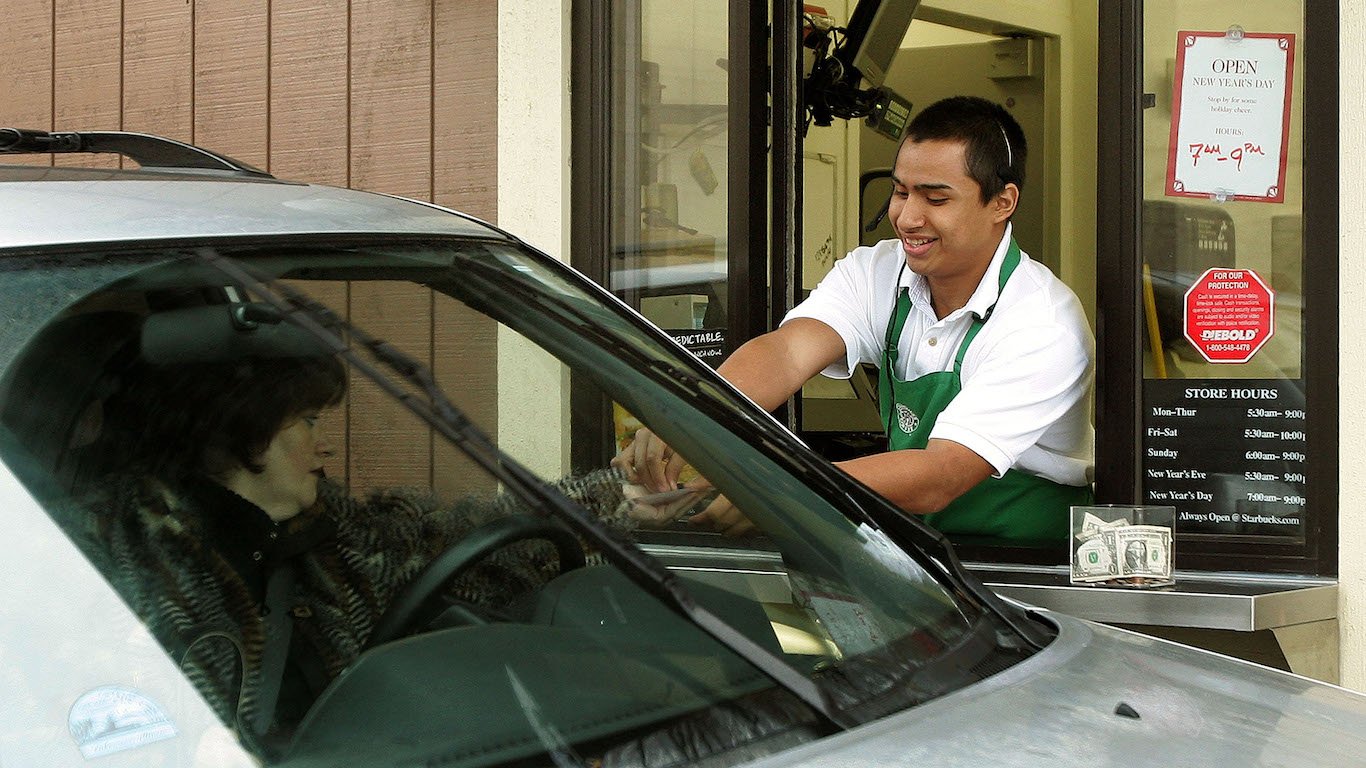

As Lyft (NASDAQ: LYFT) and Uber Technologies Inc. (NYSE: UBER) battle the state of California over how workers are classified, a new study highlights what’s at stake.
If the ride-sharing companies had been forced to classify drivers as employees instead of independent contractors, they would have owed the state of California $413 million between 2014 and 2019. That’s according to a new analysis from the UC Berkeley Labor Center.
That money would have been due to California’s Unemployment Insurance Fund. “In California, the tax rate for new employers is 3.4 percent of pay, up to the taxable wage limit of $7,000 a year per employee,” the UC Berkeley report said.
The university pulled its data from a number of sources. For 2018, it found that Lyft and Uber (both headquartered in San Francisco) would have owed taxes for 768,000 drivers in California. This factors in that many drivers work for both apps.
Researchers then estimated the earnings for those drivers based on various data sets. “The drivers’ 2018 aggregate taxable base earnings totaled $3.38 billion and the associated (unemployment insurance) payments would have totaled $114.8 million,” researchers said.
For the earlier years, UC Berkeley looked at the number of drivers, their estimated earnings, and growth of the two companies. Eventually the researchers came up with the $413 million figure.
Lyft argues that it is a supplemental, not primary, means of income for many of its drivers. “For starters, in this hypothetical reality, everyone who has chosen to drive for Lyft would have been hired by Lyft as an employee,” a spokesperson told Gizmodo after the UC Berkeley study came out. “As we’ve repeatedly said, that wouldn’t happen in the real world—instead, many, many Californians would lose the opportunity to earn by driving with Lyft.”
What Do Drivers Want?
What do drivers want? A November survey of 1,000 Uber and Lyft drivers nationwide found that 66% preferred to remain independent contractors. The poll was conducted by The Rideshare Guy, a blog covering the industry.
“Turning drivers into employees could adversely impact older drivers,” wrote Harry Campbell in a post. He said 43% of drivers they surveyed are older than 61 and 10% are over 71. “If Uber and Lyft drivers are required to drive certain shifts, it could hurt older drivers who need flexibility.”
But the same survey today might find different results. The pandemic has made clear that there’s no safety net when there’s no work for drivers. Normally, freelancers don’t qualify for state unemployment. But the federal Pandemic Unemployment Assistance program offers them benefits for the first time.
Many drivers have reported difficulty in actually getting these benefits. State unemployment offices are overwhelmed by the high number of applicants. And there’s much confusion over the new federal program.
California Has Company
California isn’t the only state going after the rideshare giants. In November, New Jersey handed Uber a $649 million fine. The state says Uber owes $530 million in unpaid unemployment insurance taxes for the 2014-2018 period. For good measure, New Jersey added $119 million for interest on those unpaid taxes.
Uber is, of course, fighting the fine. “We are challenging this preliminary but incorrect determination, because drivers are independent contractors in New Jersey and elsewhere,” a spokesperson said at the time. New York, Oregon and Washington are also considering legislation that would require drivers to be classified as employees.
In California, Uber and Lyft are pushing the Protect App-Based Drivers and Services Act as a November ballot initiative. The proposal would carve out specific labor and wage policies that apply only to app-based drivers and companies. Needless to say, it would make clear the companies don’t pay unemployment insurance. Uber, Lyft and Doordash committed $30 million each to push the ballot initiative.
What the Analysts Say
While the worker classification issue is unresolved, Wall Street analysts remain supportive of Lyft. Taking a long term view, there are 29 Buy ratings, 12 Holds and one Sell. The consensus price target is $48.82. On Thursday, Loop Capital lowered its price target from $62 to $41.
Lyft stock closed at $30.39 Thursday, down 1.4%, while the S&P 500 dropped 0.78%. Lyft is down 29.36% year to date.
After the company’s recent earnings report, Eric Sheridan of UBS cut his price target to $37, though he still rates it a Buy.
Alex Potter of Piper Sandler recently downgraded Lyft to Neutral from Overweight. He noted that while Lyft was seeing ridership increase slowly in recent weeks, the company still faces a slow recovery. “Sequential gains are encouraging, but since ride-hailing involves sharing indoor air with strangers, we expect riders may remain wary for some time,” he said.
Rohit Kulkarni of MKM Partners also gives Lyft a Neutral rating, with a price target of $33. Kulkarni notes that over 25% of Lyft’s rides in the second half of 2019 were shared rides and airport rides. Neither of those categories will recover much in this environment.
But Brad Erickson of Needham is more bullish. “Ultimately, we are unwavering in our view that the secular story of ride-hailing adoption is intact if and as we move through COVID,” he said. Erickson says Lyft is a Buy with a price target of $41.
Sponsored: Find a Qualified Financial Advisor
Finding a qualified financial advisor doesn’t have to be hard. SmartAsset’s free tool matches you with up to 3 fiduciary financial advisors in your area in 5 minutes. Each advisor has been vetted by SmartAsset and is held to a fiduciary standard to act in your best interests. If you’re ready to be matched with local advisors that can help you achieve your financial goals, get started now.
Thank you for reading! Have some feedback for us?
Contact the 24/7 Wall St. editorial team.
 24/7 Wall St.
24/7 Wall St.


